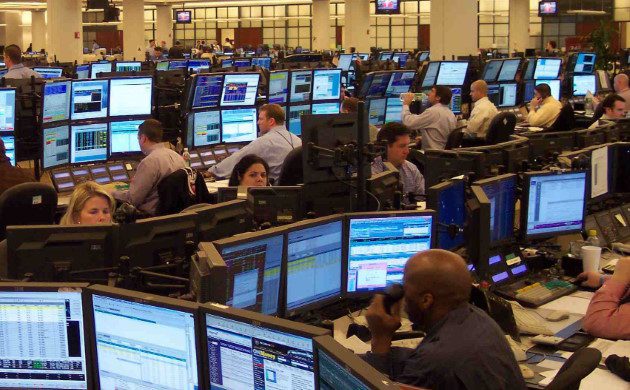(CercleFinance.com) – The weather is getting worse again on the Paris stock exchange, which is clinging to 6,900, after a radical trend reversal that occurred after the first 20 minutes of trading, the CAC40 falling from 7,105 (+1%) to 6,896 (-1.9%).
A real cold shower for this session of the ‘4 witches’ which will see the ‘mars’ contract close at its lowest (around 6.905).
The CAC40 ended with a weekly loss of -4%, and a monthly loss of nearly -6%.
Paris is not helped by Wall Street with an S&P500 at -1.4% and a Dow Jones at -1.5%.
Stock markets have had a week of great volatility, swinging between heavy dropouts and relief rebounds as the often contradictory announcements regarding the health of the global financial system: the coin falls back on the wrong side on this particular Friday.
Market participants still face a long list of concerns, ranging from the difficulties of Credit Suisse and US regional banks to rising interest rates, not to mention the threat of a global recession.
‘Compared to the period before the financial crisis, the systemic risks are much lower, but we can still expect some difficulties’, we warn at DWS.
The most watched figure today was the figures published by Eurostat concerning the annual inflation of the euro zone which stood at 8.5% in February 2023, against 8.6% in January. A year earlier, it was 5.9%.
The annual inflation rate in the European Union was 9.9% in February 2023, down from 10.0% in January. A year earlier, it was 6.2%.
The lowest annual rates were observed in Luxembourg (4.8%), Belgium (5.4%) and Spain (6.0%). The highest annual rates were recorded in Hungary (25.8%), Latvia (20.1%)
and in the Czech Republic (18.4%).
In February, the largest contributions to the annual euro area inflation rate came from food, alcohol & tobacco (+3.10 percentage points, pp), followed by services (+2.02 pp), goods industrial excluding energy (+1.74 pp) and energy (+1.64 pp).
After rising 0.3% in January 2023, US industrial production stagnated in February, the Federal Reserve announced.
In detail, manufacturing production increased by 0.1%. The production of extractive activities fell by -0.6% while that of ‘utilities’ increased by 0.5%. Production is 0.2% below its level of the previous year.
The industrial capacity utilization rate remained stable at 78%, a level 1.6 points below its long-term average (1972-2022).
The index of leading indicators continued to decline in February, the Conference Board announced on Friday, which reinforces the scenario of a recession in the coming months.
This index, considered a precursor, fell for the 11th consecutive month, posting a further decline of 0.3% after its 0.3% drop in January, in line with market expectations.
Finally, the morale of American households deteriorated in March, according to the preliminary results of the monthly survey by the University of Michigan published on Friday.
The confidence index compiled by Midwest University fell to 63.4 from 67 in February, while economists and analysts expected the index to remain unchanged at around 67.
The component measuring consumers’ judgment of their current situation deteriorated in particular, dropping to 66.4 after 70.7 the previous month.
That of the outlook fell to a lesser extent, to 61.5 from 64.7.
The bond markets benefit from the ‘risk-off’ of this second part of the session, and therefore from a ‘flight to safety’: the yield of OATs eases from -16Pts to 2.64%, Bunds from -18Pts to 2.063%, US T-Bonds down -20Pts to 3.38%.
This sharp decline is much more indicative of a deep malaise in the markets than a precursor to a favorable period because rates are falling.
Copyright © 2023 CercleFinance.com. All rights reserved.
Did you like this article ? Share it with your friends with the buttons below.




